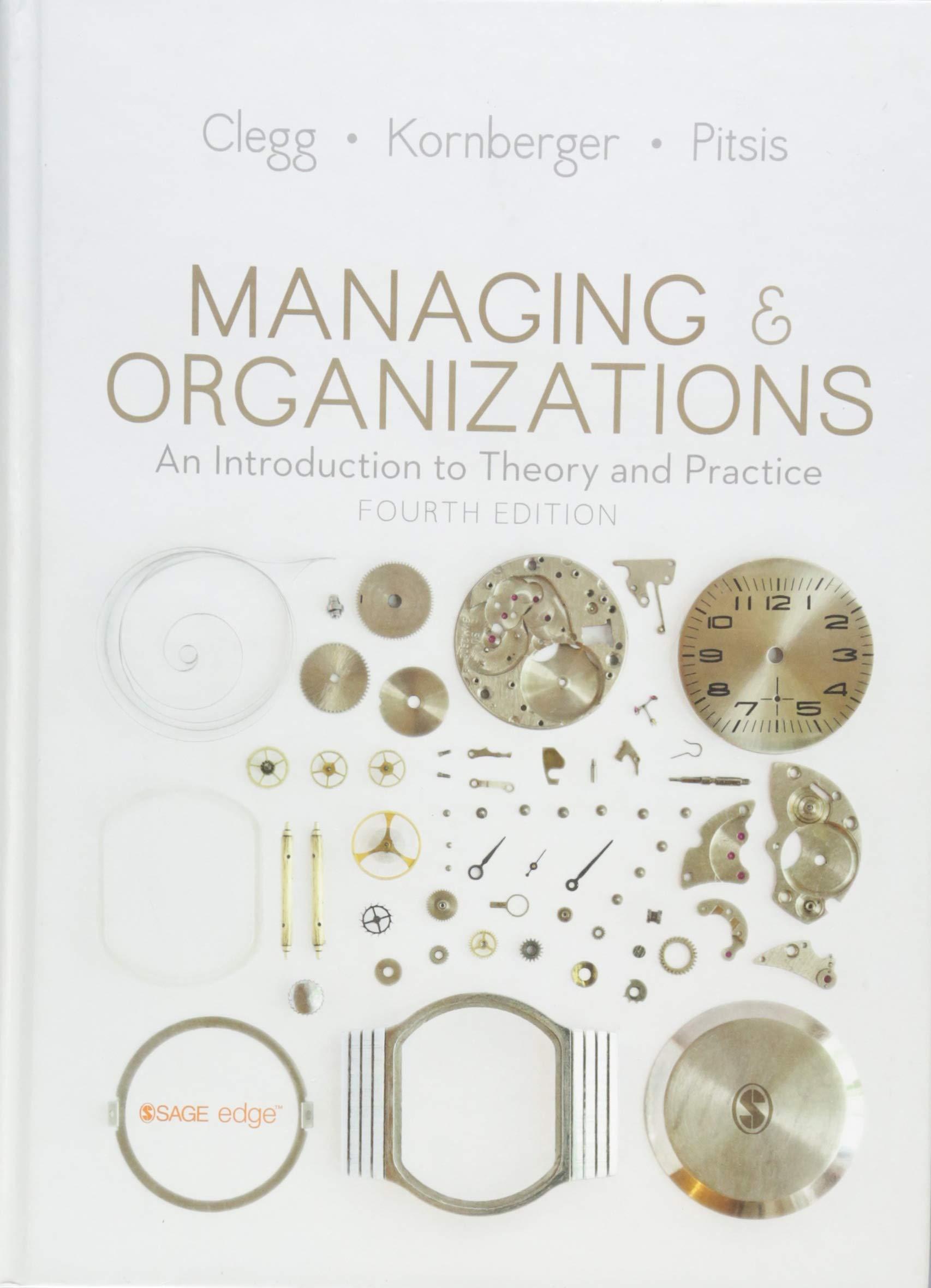Innovation is a key asset for any organization. Let us assume you agree with this statement and
Question:
Innovation is a key asset for any organization. Let us assume you agree with this statement and decide to bring innovation into your organization. If yours is a typical company it may fit the following profile: hundreds, maybe even thousands of employees; company work processes formalized over the years that seem to be doing their job pretty satisfactorily and shareholders who are more or less satisfied with the company's financials. Yet, there is a niggling sense that your company can be performing in a higher gear, and that innovation can make the difference. So what do you do? Do you change your workforce to include only the most creative people? Do you prioritize investment in new technologies? While these are steps in the right direction, their impact on the company may not be sustainable. Employees come and go and technologies are constantly changing. In this case study we describe a different approach that can make innovation a more sustainable asset for an organization. It involves changing the way people think, act, and work and an integrated effort at all levels of the organization: individual, team, and organizational.
The Bolivar Group is a Colombia-based conglomerate with an asset value in excess of $10 bn. Its holding companies include banking, insurance, construction, mutual funds, and leisure resorts. For two years Bolivar had been searching for an innovation supplier to help it achieve the company's vision of long-term, sustainable leadership through innovation. The group was looking to find a structured methodology that would allow everyone in the organization to be more innovative and so challenge the general consensus that innovation and creative thinking are inherent traits among gifted individuals.
In 2007 Bolivar began working with SIT - Systematic Inventive Thinking - a company with a structured innovation methodology that helps organizations create self-sustaining innovation. Bolivar was interested to teach its organization how to innovate. The methodology, known as the 'SIT Onion', consists of five layers and includes the tools, principles, skills, proficiencies, and activities required to deliver innovation.
Together, SIT and Bolivar launched Efecto-1! (The I-Effect): a comprehensive innovation programme that has created a culture and an attitude of innovation across the company's sub-businesses and 14,000 employees.
On the individual level, SIT provided Bolivar with innovation tools and principles that employees could apply on their own, at any time or in any situation - what is termed 'innovation on-demand'. From senior managers to salespeople to bank clerks, employees now have a method for coming up with fresh approaches to their daily tasks or solving problems....
Question
1. What kind of changes to management relations and learning among employees would need to occur when implementing such a model in an organization that had a more traditional design, more oriented to command and control, rather than innovation and creativity?
Step by Step Answer:

Managing And Organizations An Introduction To Theory And Practice
ISBN: 9781446298367
4th Edition
Authors: Stewart R Clegg, Martin Kornberger, Tyrone S. Pitsis





